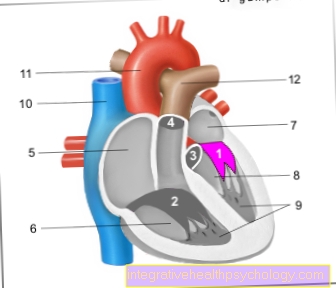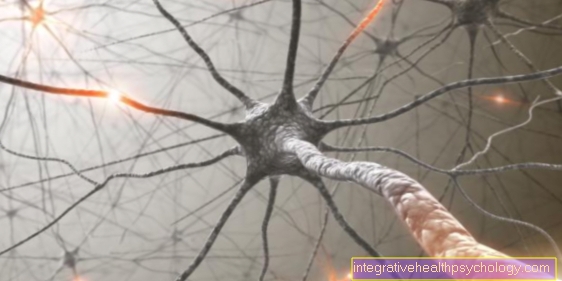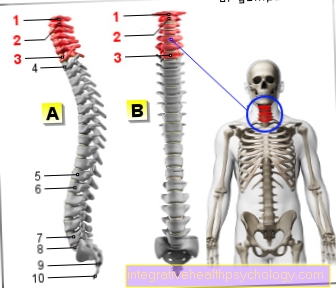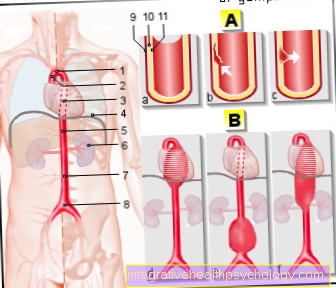Fibromyalgia
This topic includes many aspects of physiotherapy
Synonyms in a broader sense
Fibromyalgia, fibrositis, fibromyositis, fibromyalgia syndrome, polytopic insertion tendopathy, generalized tendomyopathy, soft tissue rheumatism, soft tissue rheumatism
definition
The word fibromyalgia is derived from
Fibro from the Latin fibra = fiber
Myo from the Greek myos = muscle
Algie from the Greek algos = pain
Fibromyalgia is a chronic pain disease, characterized by complex symptoms predominantly in the entire musculoskeletal system (muscles and joints) and in the vegetative nervous system.
The autonomic nervous system automatically controls vital functions such as heartbeat, breathing, blood pressure, digestion and metabolism.

Fibromyalgia: History
The extremely complex and difficult to classify clinical picture has been known since the beginning of the 20th century and was finally described in detail again in the USA in 1990. The number of those affected is estimated at around 10-12% of the general population, 90% are women. The affected patients suffered and still suffer from a lack of recognition of their generalized complaints, since pain findings are difficult to detect and document with technical diagnostics. Since the symptoms are so diverse, doctors from a wide variety of disciplines (especially orthopedics, neurology and internists) are often involved in the prehistory up to the diagnosis, as the chronically ill patients often do so-called doctor hopping (visiting many different doctors and specialties ) and therefore the various symptoms cannot be viewed holistically.For this reason, it takes about 7-8 years on average until the diagnosis is made.
The differentiation from other known rheumatic or psychosomatic diseases is still difficult. Only in the last few years have new diagnostic procedures - e.g. PET diagnostics (modern imaging process) provided insights into the central nervous system and, in particular, into the pain-processing systems. The detection of certain increased pain substances is possible nowadays.
Read more on the topic: Positron emission tomography
Since then, the existence of an altered pain perception among the affected patients has been less controversial, so that the recognition of your pain and complaints has become somewhat easier for those affected, also with regard to possible pension proceedings.
Symptoms / complaints
From the word fibromyalgia syndrome it can be deduced that the symptoms are a whole pot of different symptom complexes.
The severity of the various complaints is weighted differently for each patient. The onset of the disease is often in the late twenties, the symptoms often peak before and during the menopause (climacteric).
In older patients, the symptoms are often dismissed as age-related and therefore not investigated further.
Symptoms of the musculoskeletal system
- drawing, burning pains throughout the musculoskeletal system
- Pain intensification with physical or psychological stress
- Pain intensification at night and in the morning
- Morning stiffness and stiffness after prolonged sitting
- Loss of strength in the muscles
- cramps in the muscles, especially at night and in the morning and after exercise
also read: Pain all over the body
Symptoms of the nervous system
- Fatigue, as if exhausted after waking up
- exhaustion
- Tingling or burning sensation in the extremities, restless legs (restless legs)
- Difficulty concentrating
- Irritable stomach, Irritable bowel, Irritable bladder
- Tinnitus (ringing in the ears)
- Dry mucous membranes
- Hypersensitivity to cold and wet
- Slightly increased temperature
- Functional (non-organic) Heart trouble
- Increased sweating with cold hands and feet at the same time
- Increased water retention (Edema)
- Loss of libido (decreased sexual interest)
psychological / neurological symptoms
- Fear, depression, Mood swings
- Abnormal sensations such as burning or tingling
- Muscle weakness
- Balance disorders, Double vision
causes
After a diffuse and unspecific onset of the disease, which is often caused by persistent fatigue, Sleep disorder, Gastrointestinal complaints and Pain in the spine area is marked, the full picture of the disease develops after a few years Fibromyalgia with pulling pains in the back, Shoulders, Arms and legs and accompanying vegetative and / or neuropsychological symptoms = Pain everywhere.
Often the clinical picture does not worsen continuously, but intensifies in certain phases, e.g. after infectious diseases or severe physical and / or psychological stress. More violent Attacks of pain are replaced by lighter pain phases, small stimuli of various kinds (e.g. cold / wet, touch, stress) can cause large reactions, as the entire pain threshold is generally reduced with increased sensitivity of those affected.
Physical and psychological stress seem to be an important trigger of the clinical picture. However, there are no solid studies or data on it. The question remains about the hen and the egg. Is it the psychological distress that triggers fibromyalgia, or are fatigue and depression the result of constant pain?
New findings offer an approach to explain the origin of pain. On the one hand, the strong pain sensations and the hypersensitivity could be attributed to a disturbance in the reward center of the brain and thus to a disturbed pain processing - pain is not sufficiently filtered in the brain and thus perceived excessively - on the other hand Fibromyalgia seems to be one of the "small fiber neuropathies" in which the peripheral nerve fibers are damaged.
In contrast to inflammatory rheumatic diseases (rheumatism, Rheumatoid arthritis) in fibromyalgia there is no joint or other tissue destruction, but the disease often leads to increasing immobility (decrease of physical Fitness / endurance, Withdrawal with restriction of recreational activities) to a considerable reduction in the quality of life and not infrequently to the loss of Workplace.
diagnosis
The Diagnosing fibromyalgia and thus the differentiation from other diseases that come under consideration turns out to be extremely difficult (see symptom complex and research into causes) and is basically an exclusion diagnosis that requires comprehensive examinations in a wide variety of specialist areas.
Exclusion diagnostics means that diseases that can be reliably diagnosed are excluded as the cause of the symptoms.
X-ray, CT, MRI and Blood test give no clear statements, but should be done to rule out organ damage and other causes of chronic generalized pain. Unfortunately, it is still not possible to measure the severity of pain clearly, but the doctor can provide evidence of a Pain diary or Pain questionnairewhich also contain questions about vegetative and neuropsychological symptoms, create a picture of the course of the clinical picture.
Those affected very often have long "patient careers" with partly superfluous diagnostics and correspondingly many therapy attempts behind them.
Diagnostic criteria
The following diagnostic criteria for fibromyalgia are used:
Inquiry into the symptom complex and measurable diagnostics
- Chronic musculoskeletal pain (Pain at Muscles and skeletal system) for at least 3 months in at least 3 regions
- 11 of 18 tender points (Pain points at the muscle-tendon transition as opposed to trigger points in the muscle belly) must be present; according to the new guidelines, this diagnostic criterion is neglected
- Gastrointestinal discomfort such as. Nausea, constipation, Flatulence, diarrhea, Food intolerance
- The presence vegetative disorders such as. sleep disorders, Tiredness and exhaustion, increased sweating, cold hands and cold feet, dry mucous membranes, Dizziness dependent on change of position, Feeling of lump in the throat, functional breathing or Heart trouble
- Neuropsychological symptoms such as. fear, depression, Feeling overwhelmed, muscle weakness, balance disorders, abnormal sensations,
- Complaints in the field of sexuality such as. Menstrual pain and or irregularities, sexual indifference
- Measurement of the evoked brain potential shows an increased pain reaction to a pain stimulus
- Representation of the enlarged pain areas in the brain via PET
- Examination of the cutaneous nerves using punch biopsies
- Investigation of inflammatory processes





























